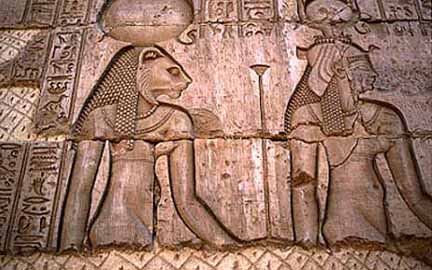|
|
Post by anansi on Jan 4, 2014 5:03:35 GMT -5
Asante  I think it's the other way around as it is call Benin sickle cell as opposed to Nile Valley or Egyptian sickle cell as it points to it's origins in that general area and spreads outwards,as for Afrocentric fantasy it's not, as we are discussing African folks and their migration patterns so the question or theory is legit,that said allow me an anecdote,a friend of mine from Ghana told me a migration story as his community elders told him..he said His ancestors the Ga were originally Jews who migrated from Yemen to Ghana,that the Ashanti then living on the coast awoke one morning to find hundred of boats in the distance with thousands of people looking like ants,the Ashanti then retreated to the hinterland and they came to occupy the coast,as proof he gave his family name as Omani.Now this sound like a dramatic migration story so I questioned another Ghanaian about the story and he said not true,that such stories are common but not to be taken seriously that more likely they trekked from places like Togo and have multiple ethnic connections like all Akan.
Because we have stronger evidence that migrations of the type you are thinking of spread from the dramatic drying of the Sahara into the Nile and else where than from the Nile valley south and west not saying that did not take place also see the map above, the genetic and cultural evidence showed that Nile Valley folks are connected to all other Africans rather than all other Africans are connected to them,and as you know Bantu is a language group this in of itself does not imply same culture although general similarity do exist, also one have to consider other language super groups such as Nilo-Saharan,Afrasian,Niger Kordofanian,the last one spoken by the Akan folks.
|
|
|
|
Post by truthteacher2007 on Jan 4, 2014 12:19:43 GMT -5
Asante  I think it's the other way around as it is call Benin sickle cell as opposed to Nile Valley or Egyptian sickle cell as it points to it's origins in that general area and spreads outwards,as for Afrocentric fantasy it's not, as we are discussing African folks and their migration patterns so the question or theory is legit,that said allow me an anecdote,a friend of mine from Ghana told me a migration story as his community elders told him..he said His ancestors the Ga were originally Jews who migrated from Yemen to Ghana,that the Ashanti then living on the coast awoke one morning to find hundred of boats in the distance with thousands of people looking like ants,the Ashanti then retreated to the hinterland and they came to occupy the coast,as proof he gave his family name as Omani.Now this sound like a dramatic migration story so I questioned another Ghanaian about the story and he said not true,that such stories are common but not to be taken seriously that more likely they trekked from places like Togo and have multiple ethnic connections like all Akan.
Because we have stronger evidence that migrations of the type you are thinking of spread from the dramatic drying of the Sahara into the Nile and else where than from the Nile valley south and west not saying that did not take place also see the map above, the genetic and cultural evidence showed that Nile Valley folks are connected to all other Africans rather than all other Africans are connected to them,and as you know Bantu is a language group this in of itself does not imply same culture although general similarity do exist, also one have to consider other language super groups such as Nilo-Saharan,Afrasian,Niger Kordofanian,the last one spoken by the Akan folks.
And this is pretty much in a nutshell what I'm saying. Its far more likely that Egypt shares a common ancestor with those other African groups rather than those Africans are descendants of Egypt. The fact that the Amarna mummies have matches in the interior of the continent speaks volumes. It doesnt show that Southern Africans have Egyptian DNA, it's the other way around. I know a lot of people want to think that Egypt is the be all and end all, but it's not! It's high time that we stop making gods out of the Egyptians and put them in their propper place as one of MANY civilizations and a civilization that received a great deal from its neighbors. |
|
|
|
Post by asante on Jan 4, 2014 17:16:24 GMT -5
Asante I think it's the other way around as it is call Benin sickle cell as opposed to Nile Valley or Egyptian sickle cell as it points to it's origins in that general area and spreads outward Ok, that map is not an explanation to the points that I brought up. What migratory event brought Africans from the Gold Coast into Western Arabia, the Levant and Turkey? We know that "Benin" sickle cell has been found in the Nile Valley in mummies dating back to 3,200 BC. Why is "Benin" sickle cell found in the Nile Valley this far back? 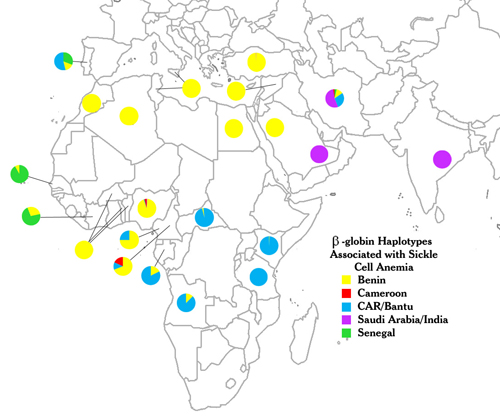 Because the so called "Afro-Asiatic" migration included "Niger-Congo"/Bantu speakers as well.  Wouldn't an origin of "Bantu" "people" in the very ancient Sudanese town as indicated by this ancient Egyptian hieroglyph  and in an expansion into ancient Egypt explain how these things came to be? Wouldn't this opposing theory of the Bantu origins by African scholar Alfred M M'Imanyara explain this? 
link
I would like to once again present these recent finding on PLEISTOCENE SUDANESE POPULATIONS or  who would eventually join the Afro-Asiatics on their northward migration to Egypt and across northern Africa. These populations are directly ancestral to the Badarians who were along the proposed northward migration route of the infused Afro-Asiatic and "Bantu" speaking populations. This explains your " Negroid" element in the pre-dynastic Egyptian population (36% overall) and your "Mediterranean" and other broad "Caucasoid" elements (Horners and Nilotes) that were said to comprised ancient Egypt. Didn't E1b1a which characterizes Niger-Congo speakers also disperse from the Sudan as the Bantu elders attest? 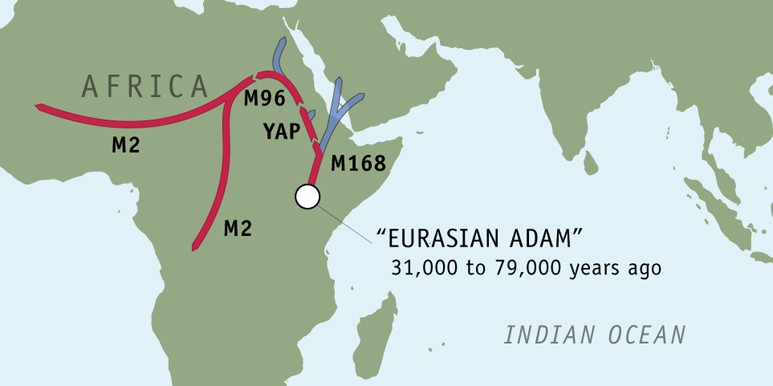 Doesn't this migration EXPLAIN the empty void of E1b1a which is now in the spot of the Bantu homeland/expansion as shown on M'Imanyara's map?  The above are modern frequencies. They are the result of past events. Some historical events are not taken into consideration because they don't have a bearing on contemporary populations in certain regions. None the less we know that each pharaoh that has been genetically tested has strongest links to E1b1a and Nilotic genetic markers. Why is E1b1a so prevalent in ancient Egyptian mummies but can hardly be found amongst Egyptians today? Not to mention that E1b1a has been dated to go back to over 2,000 years ago in Israel (ancient Egyptian satellite). What's interesting is that the populations in the regions with the highest frequencies of E1b1a maintain in their oral tradition that they came from ancient Egypt. Southern African Bantus, Bamileke in Cameroon, the various people along the Gold Coast (primarily Akan) and Nigeria, along with Senegal-Gambia (Wolof/Diop). Though much of the Senegalese cluster is probably the result of retreating Muslim Moors/Berbers who formed the Northwestward migration arch along with Afro-Asiatic speakers. DNAtribes has subsequently found the closest genetic links to Southern African Bantu's, Bantu-Nilotic mixed Great Lakes, various West Africans, and even Sahelian (Senegal perhaps) results came up in Ramses III analysis. Why not? Have the Lemba and Kalejin also not attested to living in Yemen and eventually making their way to their current locations? The Lemba oral tradition of being fleeing Hebrews and their trek through the Arabian peninsula have been vindicated via genetics.
Prior to 1996 these were considered "wild" or "outlandish" theories, by white people. Not to be funny but without this genetic information on the Lemba it's likely that you would have been looking for ways around listening to the oral traditions to explain the cultural connections. The same way that you're doing the oral traditions of the "Bantu" "people".
How so? While genetic diversity in this region is proven the group that is always mentioned in regards to cultural affinities of the ancient Saharan societies are pastoralist Nilo-Saharan speakers, and almost never Niger-Congo speakers. I've searched up and down for evidence of Niger-Congo speakers in the pastoralist societies of the ancient Sahara to explain these new genetic findings, but little to nothing comes up. It has been pointed out by Hiernaux that some ancient Saharan populations were likely ancestral to later West African populations. Berbers were another major population of the ancient Sahara. As we've read above "Bantu" speakers were infused with the Afro-Asiatics in their northward migration from Sudan and Puntland to Egypt. Well why would the "Bantu" speakers of the duo of groups have had to be the ones to have stopped in at Egypt? That same duo Afro-Asiatic and "Bantu" speakers continued to form that arch across northern Africa. Perhaps this break off point could explain the branching off of Niger-Congo and Bantu? That being said wouldn't it explain why the pre-dynastic mummified remains of the child found in central Libya (Uan Muhuggiag) were immediately identified as "Negroid" (as opposed to "European like" Nilotes or "gracile" Honers) even by mid 20th century European standards? Wouldn't it also explain why New Kingdom Libyan/Berber rulers of the 22nd Dynasty of ancient Egypt looked like this:



Osorkon III

It would explain why the remains all the way in Carthage were substantially "Negroid". If you look at the current distribution map of E1b1a (above) across Northern/Northwest Africa and particularly Tunisia and interpret those frequencies as somehow being frozen in time (and subsequent implications) then the coins from Carthage would tell another story that is not indicated by current distribution patterns:

Even areas of Southern Europe were depicted by Carthaginians as having been characterized with stereotypical black Africans populations. How can a permanent position in West equatorial Africa for these populations as you two are supporting explain these issues?
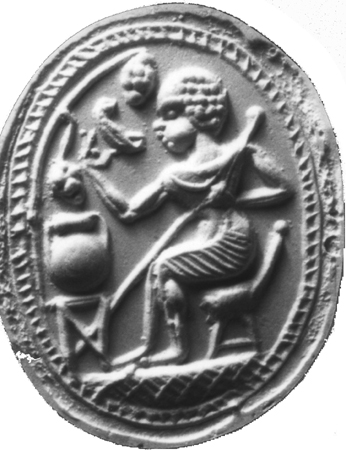
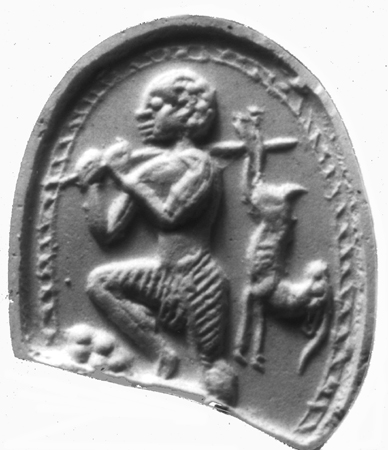
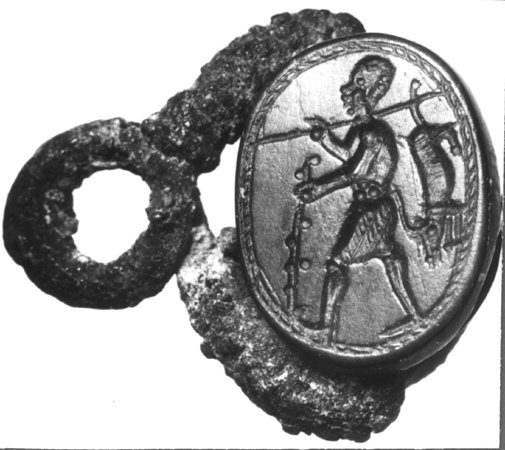
These same Niger-Congo or "Bantu" populations were also apart of the Berber migration forming the arch across North Africa who would later be conquered by the Arabs to form the vast majority of the "Arab Muslim" "Berber" army (close to a million) that would later conquer southern Europe.

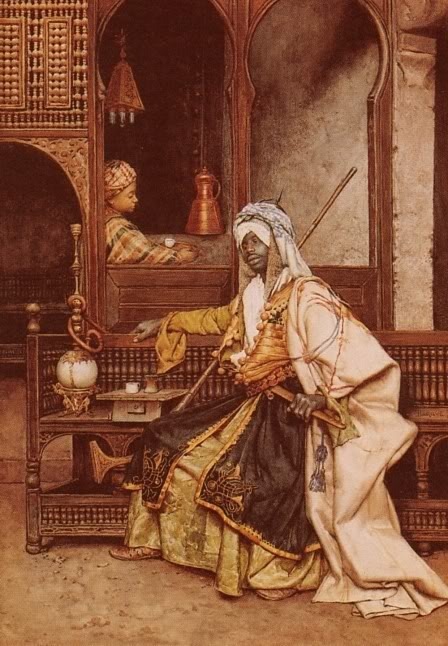  No other "theory" of African history seems to account for the ancient presence of equatorial types of blacks across North Africa. If we are to believe the theory proposed by Greenberg (the non African, European linguist) then the only "historical" event recounting a migration of West Africans from West Africa (other than the Bantu migration) is "slavery". The dating of 3,200 BC for Bs/Benin haplotype (Bantu Haplotype) in Egypt negates that. People supporting Greenberg's theory who maintain that Niger-Congo speakers were in the ancient Sahara during it's fertile period must give some kind of evidence for a substantial migration from West Africa. They must give evidence of a migration because according to most who support Greenberg, the overwhelming E1b1a genetic affinities of the ancient Egyptians remains must have came from what we know was the heavily Nilotic ancient Sahara. Have you seen evidence of an ancient migration from West Africa into the ancient Sahara? Think about this! |
|
|
|
Post by asante on Jan 4, 2014 20:45:38 GMT -5
This linguistic comparison could suggest that the Oromo Ethiopians may have been apart of the V32 back migration into the Horn from ancient Egypt: 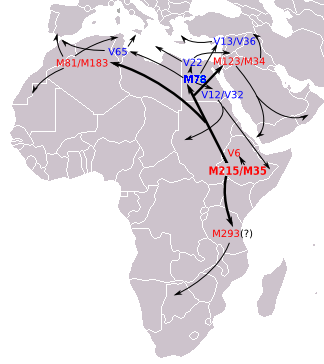 Ethnic names in the Mdu Ntr (Kemet) Oromo Oromo is derived from 'orma' - person to 'oromo' - people in the Oromo language Orma ; Oromo - the name of a god |
|
|
|
Post by anansi on Jan 4, 2014 23:25:33 GMT -5
Asante
Ok remember what I said earlier that Cameroon borders both Chad and the Great Lakes??..Zaire AkA Congo is a Great lakes state.. so there you have it,and again the proto Bantu speakers went to Kemet rather from Kemet according to your source, if echos of their genetic material showed-up in the Levant then there is a simple explanation for that also..because Kemites held sway over that region as far back as PepiII not only that but his shock troops were deep southerners,another thing proto Bantu is not quite the same as Bantu the proto implies that the language was not full formed at that time.
Interesting that your source mentioned proto-Afrasian speakers along side proto-Bantu speakers mixing it up or living together as it showed that what was to become Kemet was multi African ethnic,I might add Nilo-Saharan in the mix
|
|
|
|
Post by asante on Jan 4, 2014 23:50:42 GMT -5
Exactly! Yes exactly! The "Bantu" and Afro-Asiatic populations who made the initial settlement on the Nile were later joined by the Nilo-Saharan speaking/Nilotic Neolithic culture of the ancient Sahara, which infused into their already in place culture which kick started Nile Valley civilizations. You can see how this "theory" based on listening to African oral tradition, linguistics and biological information actually explains the presence of contemporary equatorial African populations throughout Northern Africa. It gives an explanation as to how the "Negroid" (true Negro) element wound up in Northern Africa and particularly ancient Egypt. This would explain how Keita's "tropical African variants" or indigenous tropical African diversity along the Nile came to be. Greenberg's theory can not explain in any way the presence of stereotypical black Africans with stereotypical black African language and genetic markers in northern Africa or Middle East in antiquity. |
|
|
|
Post by anansi on Jan 5, 2014 0:23:08 GMT -5
Asante  You are making a grave sin here lumping phenotype,language and genotype in the same pot,phenotype can change depending on environment,the type you posted was not unusual for ancient North African population or for places out side Africa as far east to Asia remember and the Horn have other phenotypes not just narrow featured types,the sometimes narrow featured Tutsi are Bantu speakers and yes they are E1b1 like their sometimes broad featured country men the Hutu's. The largely broad featured Hausa are Afrasian speakers and the largely narrow featured Fulani are Niger–Congo speakers. |
|
|
|
Post by asante on Jan 5, 2014 2:05:09 GMT -5
You are making a grave sin here lumping phenotype,language and genotype in the same pot,phenotype can change depending on environment,the type you posted was not unusual for ancient North African population or for places out side Africa as far east to Asia remember and the Horn have other phenotypes I'm sold on this! I understand what you mean and "theoretically" what you're saying is true, but in this case given the information that has been presented is painting a different picture than that that is illustrated by interpretations of contemporary North African genetics. We now have evidence that stereotypical "true Negroe" proto Bantu speakers joined Afro-Asiatic speakers on their northward trek. Based on this module why are we to assume that unlike the Afro-Asiatic speakers the broad featured "Bantu" speakers did not continue onto that westward (and or Eastward) migration across Africa? Now unlike ancient Egypt we don't have ancient DNA samples of these other North African regions to work with. We do have ample "negroid" skeletal remains dating back to the fertile period. One thing you must consider is that without this ancient DNA testing then the characteristically labeled "Negroid" E1b1a marker in ancient Egypt would be considered another "outlandish Afrocentric fantasy", despite "Negroid" skeletal remains and our faces (generally stereotypical true Negroes) being carved in stone throughout the civilization. At this point giving the ancient genetic information that have coupled with everything else I think that this argument is just common sense . Tutsis are about 15% Nilotic (3x more than Hutus) which is the result of earlier an Nilotic southward expansion which would not only explain their strong pastoralist culture, but also their taller height and more gracile features. Remember that the tall jet black Nilotes have been described by early anthropologist as having "European like" features. The Hausa are also largely Nilotic, and have been described by Carlton S. Coon as being "Caucasoid" in a sense. I too have always viewed them as having more gracile features then populations further West and to the South. 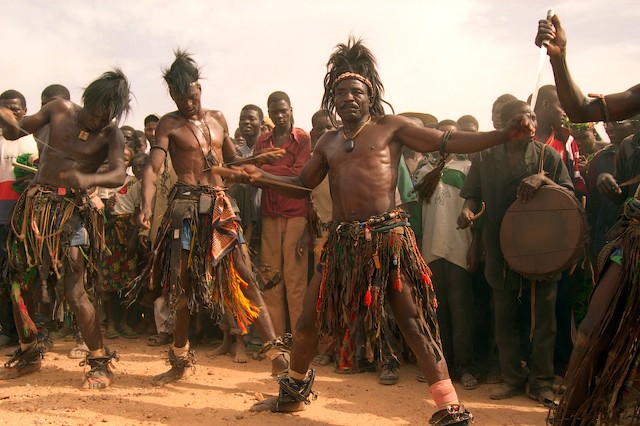 Niger Hausa Last time I read up on Fulani Y-DNA it was suggested that they have a noticeable amount of a Horn African (Hamitic) derived Northern African marker. It should be noted however that both of these populations can also be traced back to the Nile Valley. In fact the ethnic name Fulani in Mdu Ntr means "a Cushite God". |
|
|
|
Post by anansi on Jan 5, 2014 4:06:05 GMT -5
Asante It's well past high time researchers in African studies rid ourselves of really out dated terms such as "true Negroes" I know you had it quotes but to the uninformed or those who are starting out on their journey it's best not engage those terms,and again Bantu is a language group their various representatives have diverse features you have even proven the point with your pic of the broad featured Fulani above.  egyptsearchreloaded.proboards.com/thread/1411 egyptsearchreloaded.proboards.com/thread/1411An excellent write up by Zarahan,non have said that Bantu speakers never migrate eastward or westward we know for sure that some traveled as far East as Somalia,the Akan speakers and others are not Bantu speakers but they too came westward and are generally Broad featured. Please please please with cherry on top.. get rid of Carlton S. Coon he is sooo out dated he is not even cited in scientific journal today,but do you know who relies on Coon??..racist and Eurocentrist again you made use of the term Hamitic in a bio-anthropological sense although in quotes like the oid terms Negroid and Caucasoid it smacks of 19th and early 20th century mostly racist scholarship,there is nothing Caucasian and thus Caucasoid about folks like Horners or narrow featured Fulanis as their ancestors had absolutely nothing to do with that string of mountains in Eastern Europe,this is proven by genetics those features are African features modified by local environments as much as the broad featured Africans or Africans of intermediate features all of whom are not fake Africans. I am not trying to be harsh but when we use the same nonsense terms it give legitimacy to folks with an anti African world view or agenda. |
|
|
|
Post by azrur on Jan 5, 2014 4:30:05 GMT -5
 what would you say happen to these natufian people and would not all the ancient people look like the san because san are oldest of all the people? |
|
|
|
Post by truthteacher2007 on Jan 5, 2014 9:38:36 GMT -5
 what would you say happen to these natufian people and would not all the ancient people look like the san because san are oldest of all the people? Some of those people are still there. If you go to the Negev or areas around Jericho and certain areas of Jordan you will see a lot of African looking people. Some of them are descendants of the slave trade and people who voulentarily settled in the area, but some of them have been there for a very, very, very long time. A lot of them were most likely absorbed when people started migrating down into Palestine from the region of southern Anatolia and northern Syria. As far as the San. The very first people may have looked like them, but as people migrated to different regions and environments they evolved. However, you can see people with some of those features in some very surprising places. There is a Berber group in the Atlas in Morocco who have very prominant high cheek bones and very slanted eyes. |
|
|
|
Post by truthteacher2007 on Jan 5, 2014 9:50:49 GMT -5
Asante It's well past high time researchers in African studies rid ourselves of really out dated terms such as "true Negroes" I know you had it quotes but to the uninformed or those who are starting out on their journey it's best not engage those terms,and again Bantu is a language group their various representatives have diverse features you have even proven the point with your pic of the broad featured Fulani above.  egyptsearchreloaded.proboards.com/thread/1411 egyptsearchreloaded.proboards.com/thread/1411An excellent write up by Zarahan,non have said that Bantu speakers never migrate eastward or westward we know for sure that some traveled as far East as Somalia,the Akan speakers and others are not Bantu speakers but they too came westward and are generally Broad featured. Please please please with cherry on top.. get rid of Carlton S. Coon he is sooo out dated he is not even cited in scientific journal today,but do you know who relies on Coon??..racist and Eurocentrist again you made use of the term Hamitic in a bio-anthropological sense although in quotes like the oid terms Negroid and Caucasoid it smacks of 19th and early 20th century mostly racist scholarship,there is nothing Caucasian and thus Caucasoid about folks like Horners or narrow featured Fulanis as their ancestors had absolutely nothing to do with that string of mountains in Eastern Europe,this is proven by genetics those features are African features modified by local environments as much as the broad featured Africans or Africans of intermediate features all of whom are not fake Africans. I am not trying to be harsh but when we use the same nonsense terms it give legitimacy to folks with an anti African world view or agenda. I'd like to piggy back on the point you raised. Phenotype doesn't always match up with language groups. Not all Horners have nattow features. If you look at some groups in Ethiopia they have broad features just like any Central African. If I'm not mistaken, southern Sudanese like the Nuba and Dinka are not Bantu. They have broad features. A lot of Nubians also have broad features. If you look at the statuary of Egypt from as far back as the Old Kingdom, many of them had broad features. Even in modern day Egypt its not uncommon to find people with broad features of varying colors. The Mediterranian coast of Africa has always had people with broad features as well as people with narrow features. Even when we look at some southern African groups you will often times find many individuals who have narrow features. You can't look at a person and assume their language or cultural group. |
|
|
|
Post by asante on Jan 5, 2014 12:37:42 GMT -5
It's well past high time researchers in African studies rid ourselves of really out dated terms such as "true Negroes" I know you had it quotes but to the uninformed... I'm just being descriptive of their physical appearance. I want to point out that these were Africans with broad features, as opposed to "elongated" or "gracile" African variation which is most often harped about. I have been following and using the arguments presented on ES for close to 10 years now. In fact this argument is based heavily on some points made by Beyoku some years back before the revelations of DNAtribes. I'm very aware of the erroneous racial classifications of past anthropologist. When I was using the term "Caucasoid" I am again only being descriptive of the physical appearance . You characterized the Hausa as broad featured compared to your generally gracile Northeast African Afrisan speaker, and I wanted to bring the point up that the physical appearance of the Hausa had been described as the gracile as well (likely as a result of heavily Nilotic ancestry). In other words my use of the term "Caucasoid" to describe Africans (or how they were described in the past) is just me pointing at that they are gracile.
I am using the term "Bantu" to describe this group of Sudanese migrants because they referred to themselves as "Bantu". This is why the ancient Egyptian hieroglyph calls the ancient Sudanese town "Bantu" named after the inhabitants. When they made it up to pre-dynastic Egypt they called themselves the "Anu" or "Bantu". Now while there is certainly physical variations among it's speakers today, it doesn't mean that this was the case when they first started out. Now I'm not trying to down play our (Niger-Congo/Bantu speakers) own physical variation, but we must acknowledge that there is in fact somewhat of a generally broad featured physical type ("true Negroid") that characterizes the vast majority of Niger-Congo speakers (including most Bantu speakers). This same general type (recent West Africans being used) is identical to the inhabitants of Pleistocene Nubia or Sudan who would eventually trek northward into ancient Egypt and across northern Africa. Throughout ES discussion over the years I have noticed that certain members tended to over glorify certain Niger-Congo/Bantu speaking populations who had gracile features (Tutsi, Fulani) and Horners. They wanted to almost make those elongated features the poster child for equatorial African (particularly Niger-Congo/Bantu speakers) physical diversity. In reality these particular Africans do have noticeable frequencies of other distinctly African genetic types (i.e Nilotic, Horner/aboriginal North Africa).
I actually meant to label that picture Hausa, mybad. Here is another Hausa individual.

|
|
|
|
Post by azrur on Jan 5, 2014 13:30:18 GMT -5
 what would you say happen to these natufian people and would not all the ancient people look like the san because san are oldest of all the people? Some of those people are still there. If you go to the Negev or areas around Jericho and certain areas of Jordan you will see a lot of African looking people. Some of them are descendants of the slave trade and people who voulentarily settled in the area, but some of them have been there for a very, very, very long time. A lot of them were most likely absorbed when people started migrating down into Palestine from the region of southern Anatolia and northern Syria. As far as the San. The very first people may have looked like them, but as people migrated to different regions and environments they evolved. However, you can see people with some of those features in some very surprising places. There is a Berber group in the Atlas in Morocco who have very prominant high cheek bones and very slanted eyes. you can see berbers with the slanted eyes yeah 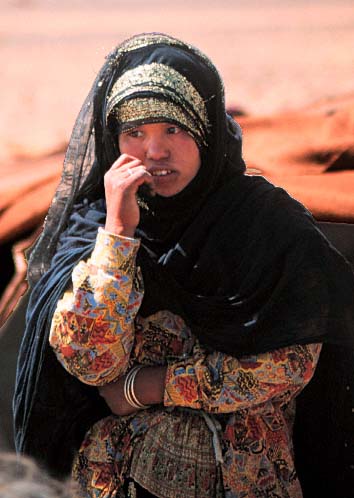    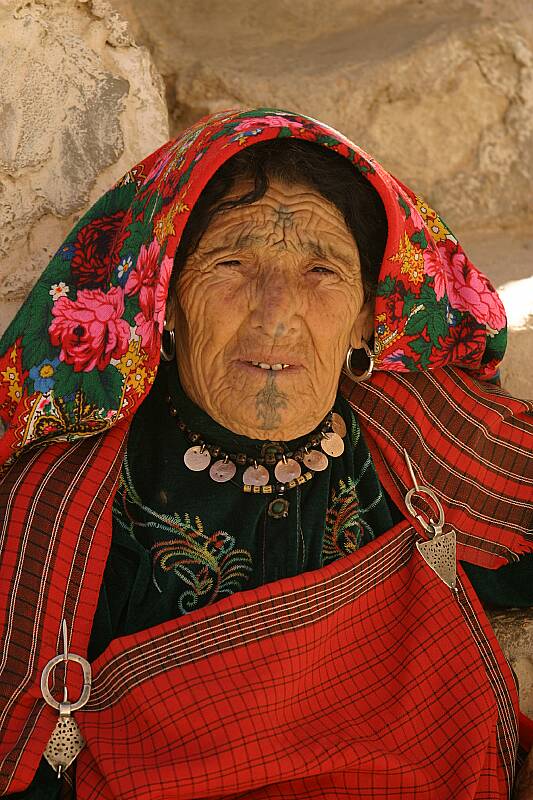 |
|
|
|
Post by asante on Jan 5, 2014 21:26:51 GMT -5
Another interesting finding is that the ancient Egyptian words for domestic animals like sheep, goat, cow, dog, cat, snake, duck, mouse, monkey ect are strictly Bantu cognates with almost identical consonantal matches. Now this is interesting because S.O.Y. Keita and Ehret have made an interesting point that the Middle Eastern domesticates like sheep and goats were not brought into the pre-Dynastic lower Nile Valley by Middle Easterners but were instead incorporated into a Nilotic agricultural system: link
It was found that there were no Semitic loan words for these Middle Eastern products, and instead the words were just simply labeled "ancient Egyptian". As stated earlier the cognates for these domestic products are strictly Niger-Congo/"Bantu" and ancient Egyptian. This negates the argument that these words came from the southward migration of retreating Nilotes from the Sahara. Not to mention that the domesticate names that Niger-Congo/Bantu speakers share with ancient Egyptian are more than just those for cattle, sheep and goats. It also includes dogs, cats, mouse, duck, snakes and other everyday animals which are not associated with the southward expansion of Nilo-Saharan pastoralist cultures. Knowing that these Near Eastern domesticates came in through Sinai in the far north, it supports the argument of the Sudanese origin/Egyptian expansion of the "Bantu" in conjunction with the Afro-Asiatic expansion (which went well past the Nile Valley). Example 8: SHEEP, DOMESTIC ANIMAL Gardiner 557 Faulkner 44 Budge 126a
Ancient Egyptian: ankhu  goat, any small domestic animal goat, any small domestic animal Ancient Egyptian: ankht  goat goat Northern Soto-Bantu: NKU = sheep
In this instance, the Northern-Soto-Bantu language Nku is the word which defines a sheep.
Example 9: GOAT Gardiner 459 Faulkner 15
Ancient Egyptian: ib  kid kid Ki-Kamba-Bantu: M-BUI = goat
The Proto-Bantu term budi used for a goat in many Bantu languages may be pronounced differently depending on the ending of the word. A kid is a young goat hence the word for a goat could be a suitable substitute for the word kid. Here are a few Bantu pronunciations: m-bushi, m-buzi, m-buti, m-budzi, pudi. M-bui is the closest match with the Ancient Egyptian word. It is derived from the Ki-Kamba-Bantu language. Note the Ancient Egyptians used the prefix i instead of the Bantu prefix m. Thus it is clear that the Ancient Egyptian word would be pronounced as i-bui instead of m-bui. Compare the prefix i with the prefix for the word for dog, i-waa shown below.
Example 10: DOG Gardiner pg 459 E 14 Faulkner pg 12
Ancient Egyptian: iw  Luvale-Bantu: Ka-wa = the dog, ‘the barker’
The word for a dog is derived from the repeated sound, wa,wa,wa made by a barking dog. The Proto-Bantu word for a dog is bua. In the Luvale-Bantu language the root is -wa and the prefixed by ka- to give ka-wa, ‘The barker’, a dog. The form u-wa means the state of being a dog. Clearly the Ancient Egyptian letter i acts as a formative prefix to derive the word i-wa for a dog. Thus the Bantu prefix ka is equivalent to the Ancient Egyptian prefix i. Other Bantu forms of the word for a dog are mb-wa, or emb-wa.
Example 11 Faulkner 285
Ancient Egyptian: ky
Kiswahili-Bantu: kima, monkey Proto-Bantu, kima, monkey
The word for a monkey seems to be derived from the word for tail of a monkey. M-kia means tail and seems to fit in with ideas about a monkey having a long tail. Hence the word 'tail' for a monkey.
Example 12: CAT Gardiner page 459 E13. Faulkner 104 Budge 277
Bemba-Bantu [The cat = miaow or niau (nyau)]
Question: How does one pronounce the characteristic high-pitched cry of a cat? Is it a miaw, miaow, or miau? The word for a cat in Southern Africa is synonymous to the cry of a cat and is pronounced with the consonant n instead of the consonant m giving a niau or nyau sound. The Kiswahili-Bantu and Bemba-Bantu word nyau or niau mimics the cry of a cat and is used as the word for a cat. Below are three forms which describe possible pronunciations of the word for a cat. The last set of hieroglyphics consists of the feminine form ending with the consonant -t. If one assumes the form miaow instead of the form niau then the feminine form would be given as miaow-ti.
Ancient Egyptian: miw  cat cat Mi cat cat
Bemba-Bantu; Kiswahili-Bantu: The cat = niau (nyau)
miaou-ti cat (feminine) cat (feminine)
link |
|








 and in an expansion into ancient Egypt explain how these things came to be? Wouldn't this opposing theory of the Bantu origins by African scholar Alfred M M'Imanyara explain this?
and in an expansion into ancient Egypt explain how these things came to be? Wouldn't this opposing theory of the Bantu origins by African scholar Alfred M M'Imanyara explain this? 
















